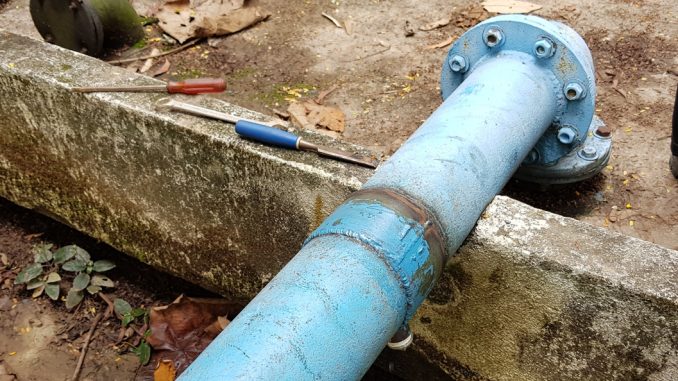
Not all holes in pipes are bad. And when you have an intentional hole in a pipe, the line has to be reinforced. Which is where the welded saddle joint comes in.
From taps to tee connections, there are plenty of examples of a hole in a pipe being necessary. But any hole created decreases the strength of that particular section of pipeline.
There are two ways to compensate for this loss of strength and ensure that the entire pipeline remains operational at a safe specification.
One is by fabricating the original pipe with extra wall thickness in the first place; so that even with a tap or tee connection, the line retains the required strength.
This is not always possible, however. The pipe material could prohibit adding extra thickness easily, or the hole might have been added once the pipe was already in service, such as when a branch is connected.
In these instances, extra thickness can be added to the outside of the pipe by installing a saddle joint. Buckle up as we explain what a saddle joint is and how it works.
What is a saddle joint?
A saddle is usually fabricated by extrusion process. It is fitted over a section of pipe with a tap, tee connection or other sort of hole to supply adequate reinforcement to the joint.
Saddles are typically welded in place although on some occasions a removable joint will be used. They are not designed to contain pressure and so to prevent build up between the saddle and the pipe, they are made with a weep hole.
There are two main types of saddle joint. Full encirclement encompasses the entire diameter of the pipe. A partial saddle sits around only the connection to the main line.
Full encirclement saddles
A full encirclement saddle encircles both the main pipe and the tee connection or tap running from it. They come in separate parts – normally made from steel – which are then fitted around the section and welded in place.
The ends of a full encirclement saddle are not welded to allow for expansion and contraction of the main pipe and its connections.
This can however cause problems should a leak develop between the joint and the line – which we will talk about shortly.
Partial saddles
A partial saddle provides a cheaper alternative. They are typically made from carbon steel or alloy and use less material, meaning a lower cost.
Partial saddles are used where the pipe or tap to be connected is less than half the width of the main line.
They are welded in place and sit only around the connection, increasing the thickness and supporting the base of the main pipe.
Problems associated with saddle joints
For a long time, the major problem associated with this form of pipe reinforcement was leaking saddle joint repair. Leaks between the saddle and the original pipe were notoriously difficult to seal and if the two components were made of metal and water became trapped between them, corrosion could wreak havoc.
The reason that saddle joints provided such a challenge is because of the step between the saddle and the pipe. The former sits higher than the latter, rendering traditional techniques like repair clamps useless.
Malaysia is a country where the welded saddle joint is extremely prevalent on their water network. Water normally escapes through seeping rather than dramatic bursts, meaning it was easy to turn a blind eye to only pipe surfaces being wet or the ground around a saddle being damp.
But enough leaks left unresolved to lose enough water for long enough soon adds up. It was therefore considered a big breakthrough when a water company in Malaysia developed a welded saddle joint repair method for a 150mm steel pipe at a pumping house.
With the one downside of a saddle joint now removed, they suddenly look an even more effective method of pipe reinforcement than before.

Leave a Reply